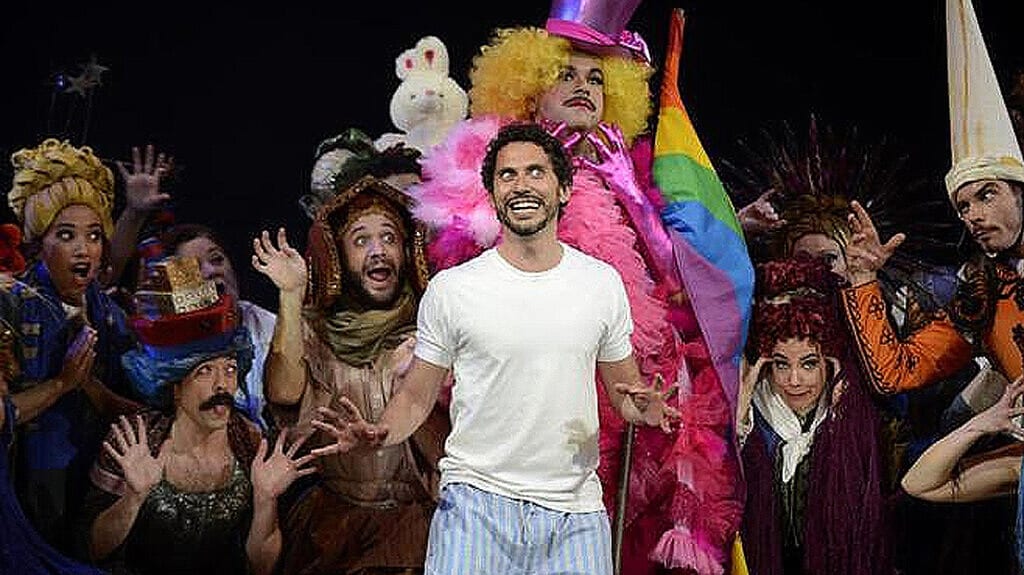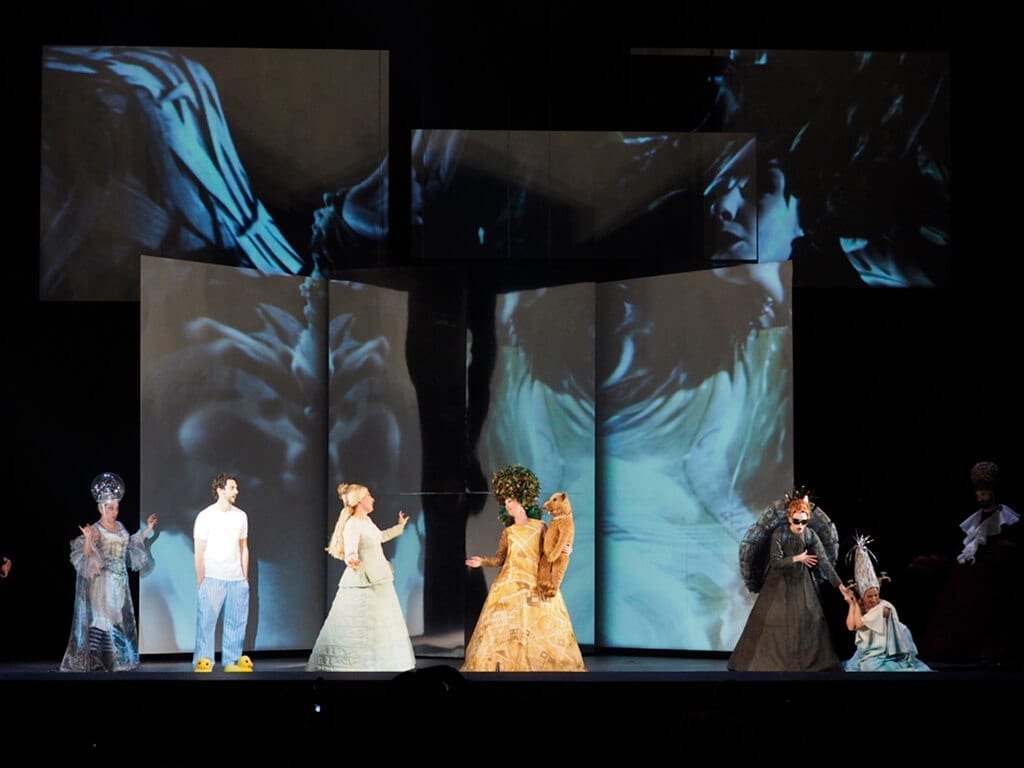¡Cómo está Madriz!, subtitled as “an oneiric trip”, has been premiered in Oviedo with great success – almost sold out – and with a big generational renovation. The day of the premiere we could see not only the average zarzuela’s lovers —generally of middle or advanced age— but also young people. This public came after the intense polemic in Madrid, where a small part of the audience tried to boycott one performance, generating a big effect in the press[1] and a debate that resulted in attracting this new public, who immersed in the electoral campaign of general elections, comes to the Campoamor Theatre to be amused with the Spanish “miseries” which made us laugh and think. Paco León —a very well-known Spanish actor— leads this proposal, performing a neighbor in the current Madrid who, suddenly, is immersed in this city but at the end of the 19th century.
¡Cómo está Madriz! is a dramatic recreation of the “revista” La Gran Vía (1886) —the title referring to a Madrid street. The “revista” is a brief kind of lyric-theatre about topical issues, usually presented in a satirical way. All of this turned the genre in an “apotheosis of popular culture”, according to the two foremost experts Cortizo and Sobrino. La Gran Vía was one of the major successes in the whole History of the Spanish Lyric-theatre, being interpreted thousands of times in theaters of Spain and abroad. It was so successful that it had a sequel, El año pasado por agua (1889) —it could be translated as The year that rained cats and dogs—; some of its musical numbers were added to ¡Cómo está Madriz!
As it is mentioned in the program, this work shows —and regrets— with great irony and intelligence the similarities between the Spain from the late 19th century and the one of the beginning of the 21st. The bipartisanship between conservatives and liberals just like in the current political situation with the PP and PSOE parties; the “new” discourses are personified in two Pablo Iglesias: the first one, the Socialist, founder of the PSOE in 1879, and the present Iglesias, founder of Podemos party. The director of stage Miguel del Arco has offered an approach which is quite similar to the original Gran Vía: ¡Cómo está Madriz!, using the original musical number’s lyrics, denouncing the corruption of political class in the Jota de los Ratas —The Thieves’ Jota—; pointing out the social immobility in the brilliant Tango de la Menegilda —Menegilda’s Tango—, and noting the function of press as an opinion-maker during the Pasodoble de los Sargentos —Pasodoble of Sergeants—, turned into journalists who can “add up, multiply”, but also they can “divide”.
Del Arco has used features from the original “revista” as allegorical figures —the Streets of Madrid or the Sincerity—, but he also added the Transparency or the Public Opinion, and included real people. For example, in the second part appear intellectuals from the beginning of the 20th century (Jacinto Benavente, Valle Inclán, Perez Galdós, Antonio Machado…), but even they are criticized! This part is partially about the women’s movement, for example the first Feminist, and this work demands sexual freedom and recognition – symbolized in the forgotten Spanish exotic dancer Tórtola Valencia (1882-1955). This second part does not have the vigorous pace of the first one; it is slower, but by no means less amusing, on fundamental topics.
The stage setup in this energetic, agile and entertaining performance uses a mobile staircase and different screens, on which images are projected completing and conforming areas.
The choir fills the stage with its energy, pushing the performance, but at the same time it lacks vocal maturity; at times their too “forte” performance overshadowed the singers, Isabella Gaudí for example, who sang correctly her difficult Vals de la Bujía (Waltz of the Candlestick). María Rey-Joly and Luis Cansino stood out in their double theatrical and vocal condition accompanying a giant Paco León. Amparo Navarro sang very well the Chotis del Elíseo. Jose María Moreno conducted properly, though the Tango de doña Virtudes was too slow, which did not help the singer Amelia Font.



